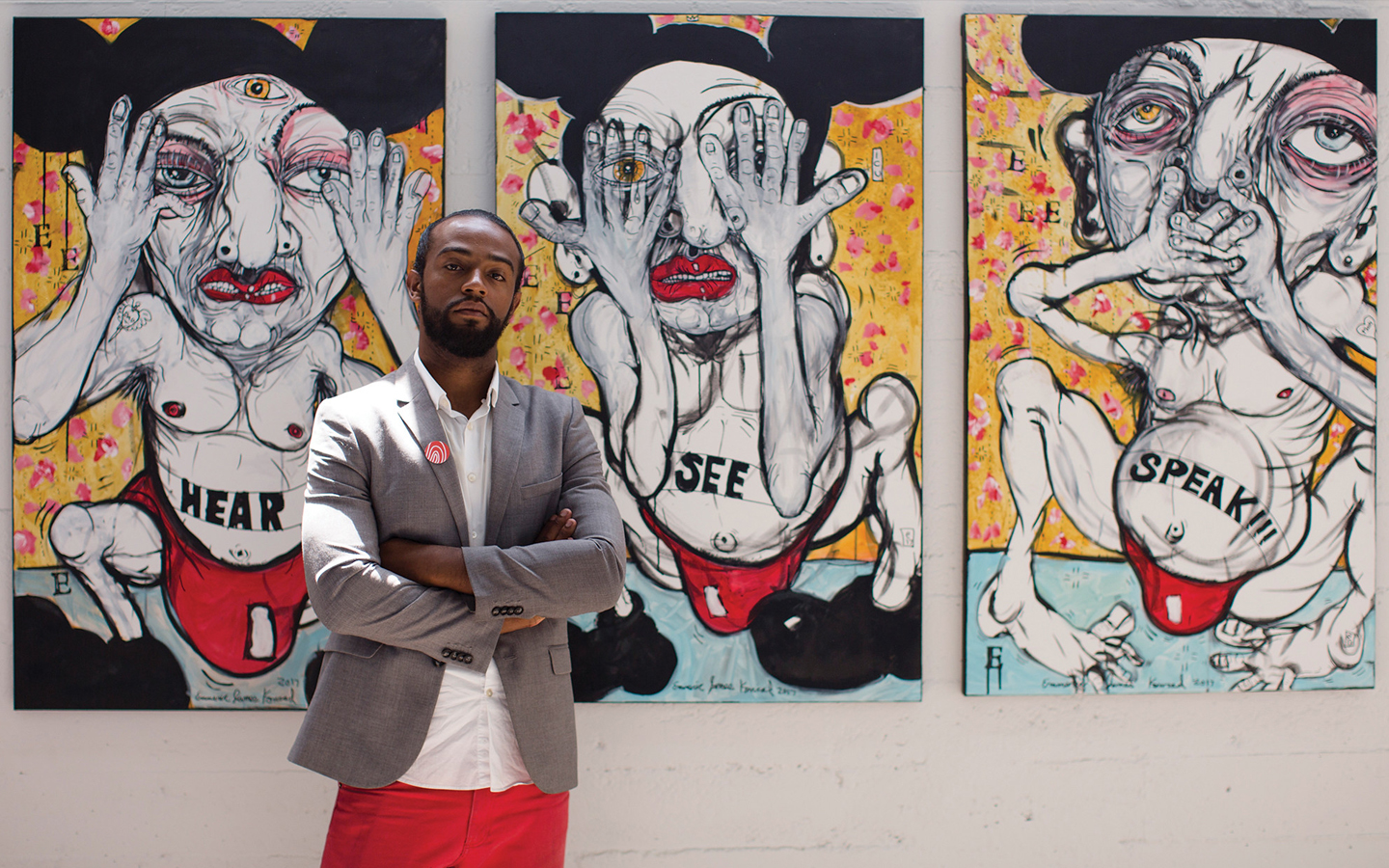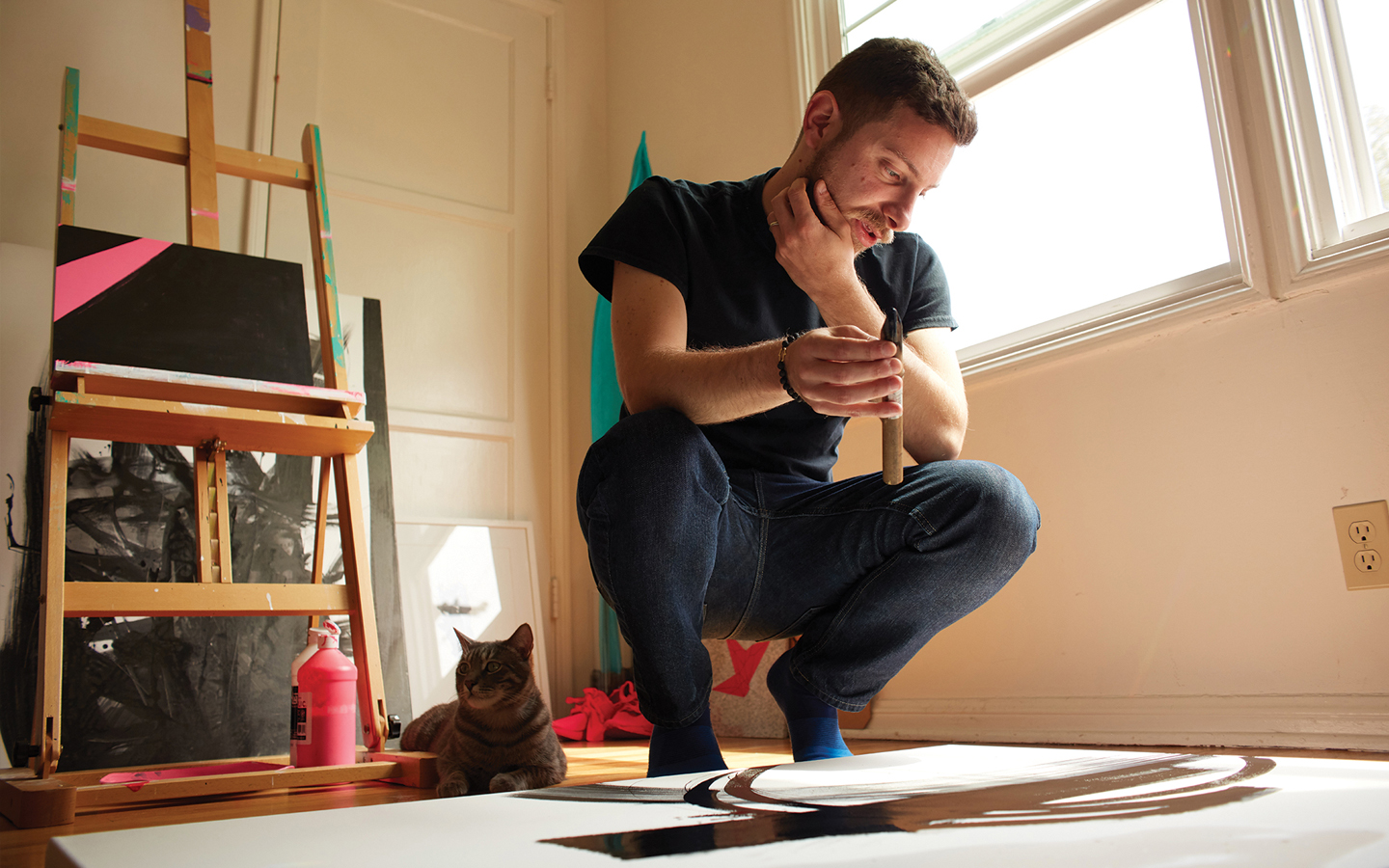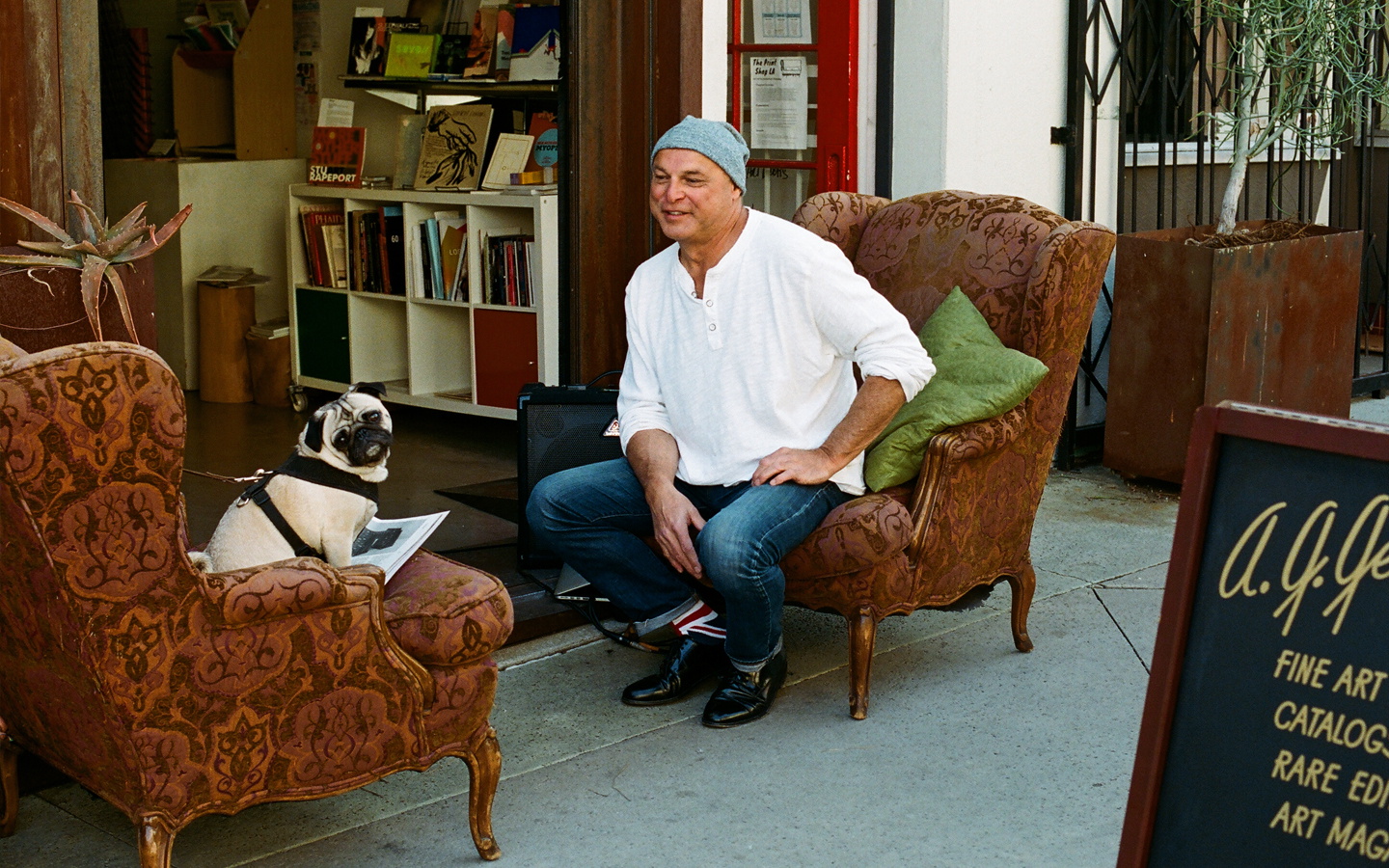
Jeremy Quant
TEXT JACKSON ROCKWELL
VISUAL ALEJANDRO OHLMAIER
If the breakneck pace of the 21st century proved anything, it’s this: change happens, but only when we make it so. When it comes to making art, conducting business, and generally interacting with people, the paradigm has shifted, but those shifts didn’t happen in a vacuum. Instead, they’re the result of countless hours of effort by visionaries – visionaries like Jeremy Quant, who works to make the art industry more accessible and engaging to the everyday person.
Between decreased barriers to entry, the rise of social media, and a virulent sociopolitical climate, today’s art industry operates differently than in times past. For many, adjusting to the new model has been a difficult exercise, but for entrepreneurs like Jeremy Quant it’s brought a whirlwind of opportunity. Jeremy operates a handful of businesses including Dot Red Art Tours and JQ Art Business, as well as being an advocate for arts education through his role as Cohort Leader in Arts For LA.
Jeremy finds joy in exposing people to art, especially those who might not think of themselves as “art people.” He finds that deeply personal interaction is often critical in bringing new recruits into the art world. For example, through Dot Red, Jeremy leads art tours that allow people to interact directly with artists and gallerists, injecting a sense of personality into pieces that might otherwise have felt empty. Jeremy explains that “at a museum, [seeing art] can sometimes feel a little sterile. It’s beautiful work, but where do you get the context? Where do you get the interaction and conversation?”
Though some museums and galleries are beginning to adopt more interactive experiences, Jeremy aims to create “a much higher level and quality of access… to break down the barriers of engaging with the artists. There’s still this stigma of the art world being for ‘first class citizens’ who have a six-figure income, but it’s not like that. Yes, artwork might sell for ten to twenty thousand dollars, and there’s some real validity in that.”
The interactive nature of an art tour doesn’t end with the artists and gallerists. As Jeremy explains, the experience itself is different from visiting a museum, and often more engaging, thanks to the other people in your group. “You’re in a group of people all taking in the same information at the same time, but they are all reflecting differently.”
Though some may see him as a tour guide, he’s up to something much more than that: He’s curating experiences that will in a single tour take guests through gallery experiences, museum experiences, and art-studio experiences, encompassing all aspects of the art world.
Jeremy also seeks to act as a catalyst for the next generation of artists. He does so through his work with Arts For LA. He describes this work as “[going] beyond the artwork itself, and engaging [the students] in the community. They find out that they actually have art in their backyard, and that it’s accessible. My hope [for the future] is that it will be a very rich environment in terms of creativity. It’s also something that is going to be needed more as we get into the economy of automation. You’re forced to be creative and think outside of the box.”
Thinking outside of the box is undoubtedly one of Jeremy’s strong suits. From an early age, he aspired to something more than a 9-to-5 existence, and found himself naturally drawn to the path of the entrepreneur. He explains that he found success by adopting the mentality that “you are the business. It gets into your individual state of being as an entrepreneur. I’m an individual, but I sell my services, and that’s the business.”
Of course, creating a successful business takes more than simply having the right mindset, especially in an ultra-competitive industry like the arts. “Shit ain’t easy,” Jeremy jokes. “I’ve had to sacrifice a lot to get here. I don’t think very many people who know what it takes to get here would want it… and I don’t blame them.”
So what’s the trick to success? According to Jeremy, “it’s all about perception.” Success isn’t about winning. It’s about the ability to look at every challenge, no matter how intimidating, as a new opportunity to win.
For example, Jeremy chooses not to drive, preferring instead to walk, bike or rely on public transportation. To many people, this would be an unfathomable challenge in an auto-centric city like Los Angeles, but for Jeremy, it’s actually been a boon. His limited mobility forces him to focus most of his efforts on DTLA, one of the more vibrant art communities in the country. It also creates time for him to pursue his own artistic projects: “Obviously I don’t own it, but I like to think of the bus as this big, 18-wheeled vehicle that I’m chauffeured around in. It gives me the chance to work and create art while I’m traveling somewhere, instead of having to focus on driving.”
In addition to advocating for artists through Dot Red and Arts For LA, Jeremy is also an artist himself, creating work both for personal fulfillment and for the JQ Art Business. There is synergy between his business pursuits. “I do the art tours to expose people, but it’s also a real inspiration for me. It helps me to understand what the world of art is, and how artists create and survive.” By getting a firsthand look at the qualities and behaviors consistently endorsed by successful artists, Jeremy both improves his own work and enhances his ability to rouse a love of art in others.
At the end of the day, Jeremy isn’t successful for any one reason in particular, but because of many influences that he strings together. He understands art from many perspectives, including that of the artist, the gallerist, the advocate, and the observer. His ability to combine these perspectives not only allows him to better understand the multifaceted needs of the 21st century artist, but also allows him to create art and experiences that improve the lives of others.
You may also like
Michael Delgado of A.G. Geiger Fine Art Books
What’s delightful about Delgado’s progression is his uncalculated pedigree: “I started collect
Betty Dodson
“I get to spend most of my time now doing things that I love. That’s freedom. And everybody coul




